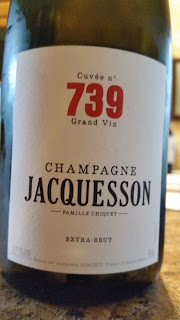This recipe came from "Jacques Pepin, Heart & Soul in the Kitchen" @2015, Houghton Mifflin Harcourt, pg. 125,
I am intimidated by fish so was worried about trying this recipe. The event called for a fish appetizer so this seemed perfect. The puzzlers were gathering and our wine focus was on white wines. I used cod but would love to try this dish again when I had access to fresh fish. Jacques said he likes to use black fish when he is in Mexico. Snapper and halibut would also be an option. Use a fish with mild flavor. He suggests this as a first course or as a main course for lunch. Savignon Blanc is a great pairing.
Serves 4 as a first course
Ingredients:
1 # while fish fillets
3/4 t. salt
3/4 cup coarsely chopped red onion
1 T finely chopped garlic
3 T fresh lime juice
1/1/2 cups diced (1/2 inch) ripe tomatoes
1/4 cup coarsely chopped fresh cilantro

1 1/2 t. finely chopped jalapeno pepper, or to taste
lettuce leaves for serving
NOTE: some recipes also include pitted green olives chopped and ripe avocados peeled, pitted and diced.
Directions
Trim the fish of any sinews or pin bones, so it is totally clean. Cut the fish into 3/4 inch pieces.
Combine the fish with the remaining ingredients except the lettuce.
NOTE: The fish can be marinated a day in advance, after about 4 hours, when the fish is "cooked," drain it so that it won't become too tangy. For the freshest flavor, add the flavoring to the fish no more than a couple hours before serving.
Jacques suggests arranging the lettuce leaves on four plates or fit the leaves into martini glasses. I
totally forgot this part. It would be looked so cool. Another recipe suggests placing the ceviche in a large bowl and let people spoon in onto individual plates. This is what I did.
Serve immediately.
































